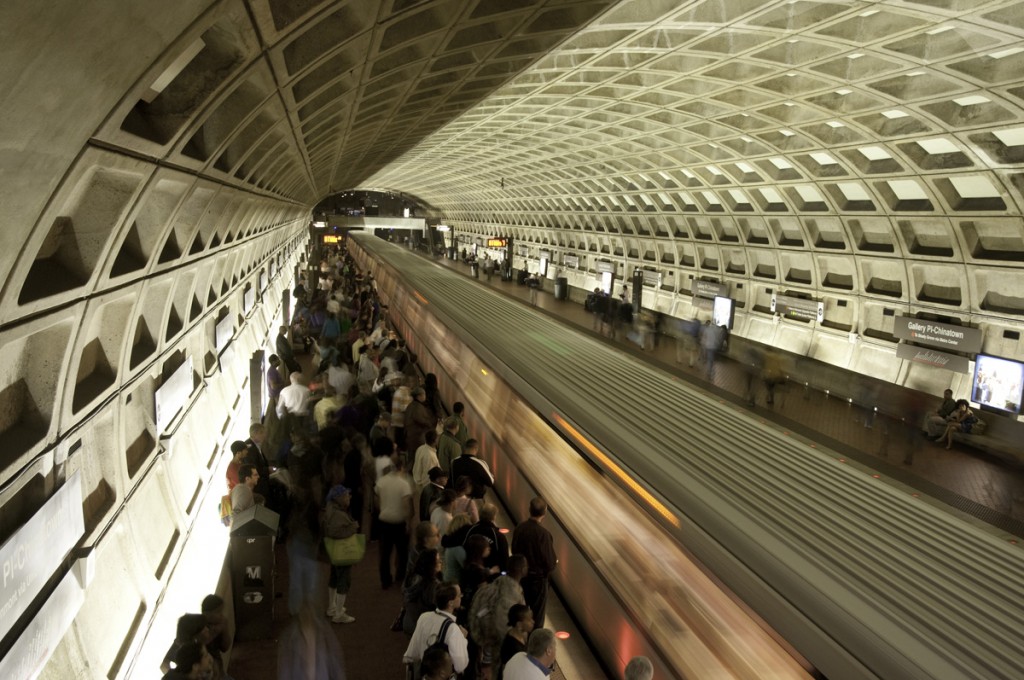Changing Metro’s Funding Trajectory
The Transportation Planning Board (TPB) estimates that without funding commitments from Congress, the District of Columbia, Maryland, and Virginia for Metro’s ongoing maintenance and core capacity improvements, as many as 32,000 future daily transit riders would be pushed onto the roadways instead.
In a recent report, the TPB cites that under the current funding trajectory, Metrorail riders will face significant crowding and experience less service reliability in the future. Critics often cite low forecasts of future Metrorail ridership from the TPB as a reason to avoid committing robust levels of funding for transit. What they don’t tell you is that the ridership numbers emerging from the travel demand model are manually “capped” so that there is no ridership growth beyond 2020 – the year beyond which current levels of maintenance funding levels expires. In other words, because regional leaders have not committed to funding transit, those that forecast travel demand have decided to stop forecasting increases in transit usage. Were it not for this artificial “cap”, travel demand forecasts would show much higher numbers of future transit use. We all know that such a “cap” ignores the last 10-15 years of increasing transit usage region-wide (performance analysis of the CLRP  )
)
Metro’s strategic plan, known as Momentum, proposes a number of core capacity improvements to handle more riders, and offers a plan of initiatives necessary to remove the so-called “transit constraint” placed on the system in 2000. Metro 2025, one of the main components of Momentum, includes:
- running all eight-car trains during the peak period,
- improving and expanding capacity at existing core stations,
- adding service and implementing bus priority treatments on high-ridership bus corridors,
- restoring Blue-line train frequencies during the peak period,
- adding pocket tracks and crossovers at key locations in the system,
- expanding the bus fleet to accommodate new demand, and
- investing in a next generation communications system.
Metro planners are working with TPB staff to ensure that along with the funding necessary to maintain a system in a state-of-good-repair, the seven initiatives comprising Metro2025 are funded and added to the region’s Constrained Long Range Plan (CLRP) during this year’s major update.
The addition of these projects and sustained funding for Metro maintenance in the CLRP will enable the removal of the transit-constraint and allow travel demand forecasters to accurately portray future transit demand in the performance analysis of the CLRP plus the additional induced transit demand resulting from Metro2025 initiatives.


As counties in MD and VA continue to promote sprawl, then attention will be diverted from putting transit where transit is needed the most to constructing more highways.
In the Bay Area, BART wants to extend one of the rail lines into Livermore. Currently, this line runs in a highway median, complete with huge parking structures for its two stations in the Dublin-Pleasanton area. BART wants to run the extension into downtown Livermore where it can connect directly with commuter rail from the Central Valley, as well as spur smart growth development in the city’s core. However, most opposition wants to have the extension continue along the highway median, miles from downtown, because of the fear that BART will bring “crime and other unsavory activity” to their town. Really? In 2014, NIMBYism and paranoia still run rampant, regardless of the statistics that prove otherwise.
My point is that even though transit planners can have the best intentions, educating the public about the benefits to be derived from transit investment is necessary to get a smart project built.
@Mark
Good point, Mark. Thanks for your comments. Please click on the link “induced transit demand resulting from Metro 2025 initiatives” for a description of benefits derived from transit investment as you suggest.